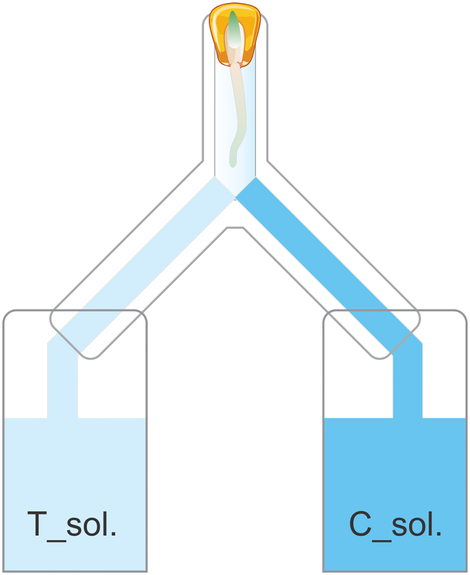
Plants don’t like to be touched. For these immobile organisms, it means they’re likely growing too close to a neighboring plant, and that their access to available sunlight is under threat. New research shows that touch-sensitive plants can communicate a warning message to their related neighbors, advising them to adjust their growth patterns accordingly.
Plants can’t move, nor are they capable of verbal expression, so they’ve had to evolve other ways of responding to (and warning others of) their unfavorable conditions. Previous studies have shown that plants can communicate with each other by sending chemical signals through the soil, but the extent to which these messages are influenced by aboveground physical events are poorly understood.
New research published this week in PLoS One shows that the leaves of some plants are sensitive to touch, and that the rubbing of their vegetative elbows sets off a chemical stress signal underground. When related plants receive this “I’m getting crowded!” signal, they alter their growth patterns in response.
Velemir Ninkovic from the Swedish University of Agricultural Sciences made this observation while experimenting on corn seedlings (Zea mays), which he grew in a growth solution. Ninkovic took some corn seedlings and lightly brushed their leaves to simulate the touch of a nearby plant leaf. This caused the seedling to secrete chemicals out from its roots and into the growth solution. When Ninkovic tried to grow new seedlings using this chemical-infused bath, the new plant grew more leaves, but fewer roots, when compared to controls.

To make sure this wasn’t some random response, the researchers conducted a second experiment. Corn seedlings were planted in the presence of two different growth solutions, one in which plants had been touched and one in which they hadn’t. Watching the plants grow, the researchers watched as the seedling’s primary root inched towards the growth solution of the untouched, unstressed plants. This indicated that the seedlings, who were siblings, could tell the difference between the two growth solutions.
In terms of an evolutionary explanation, it serves two purposes—one altruistic, one selfish. By transmitting the stress signal, the plant helps its genetic kin to avoid a crowded area and the need to grow more leaves to capture a potentially dwindling resource: sunlight. At the same time, however, the signaling plant is also ensuring that an already crowded area doesn’t get even more crowded.
“Our results show that the above ground plant-plant communication by brief touch can provoke responses in nearby non-touched plants through belowground communication,” write the authors in the new study. “This indicates that responses to neighbouring plants can be significantly affected by the physical conditions...to which these neighbours are exposed to. It thus suggests that plant-plant belowground communication is modified by above-ground mechanical stimulation.”
This study reveals a level of complexity never seen before in underground plant-to-plant interactions. Incredibly, messages about what’s happening aboveground can be communicated below the surface to neighboring relatives. But there’s another interesting aspect to this research as well: It means scientists who study plants have to be very careful about touching their specimens, lest it influence the results. The plants are talking....
[PLoS One]
.png)

No comments:
Post a Comment